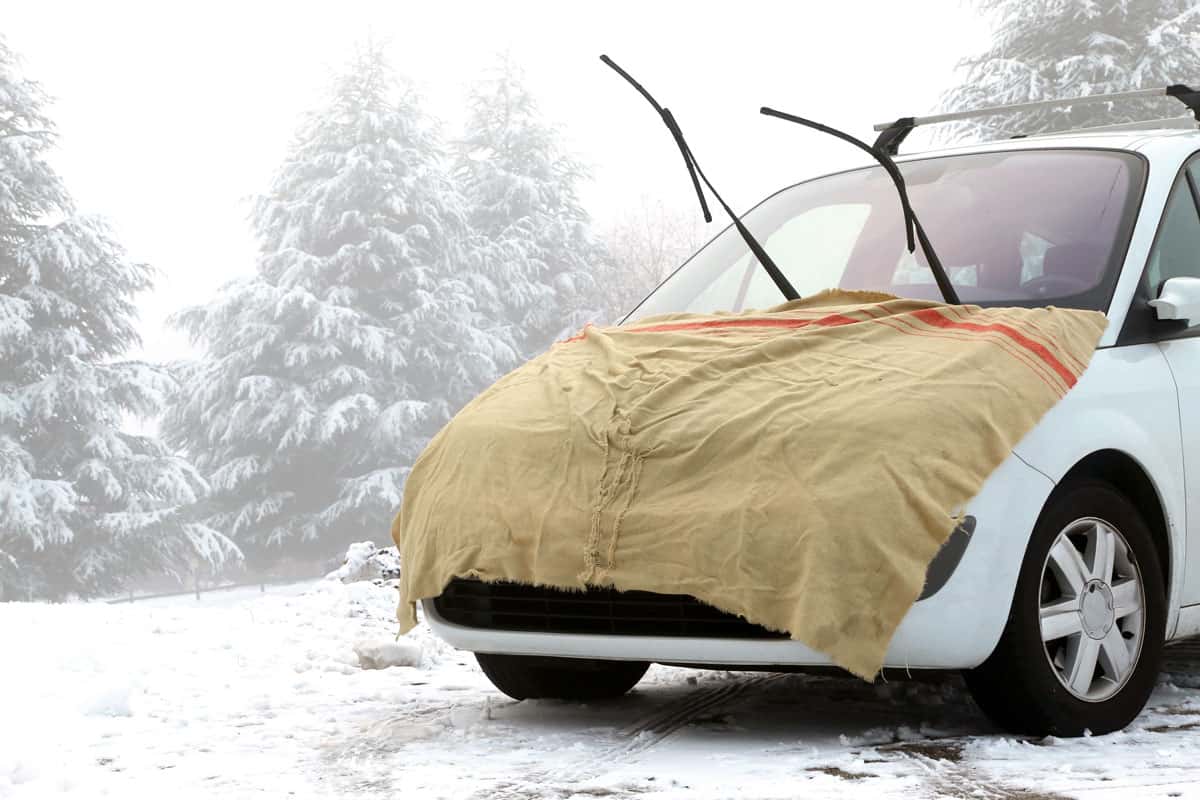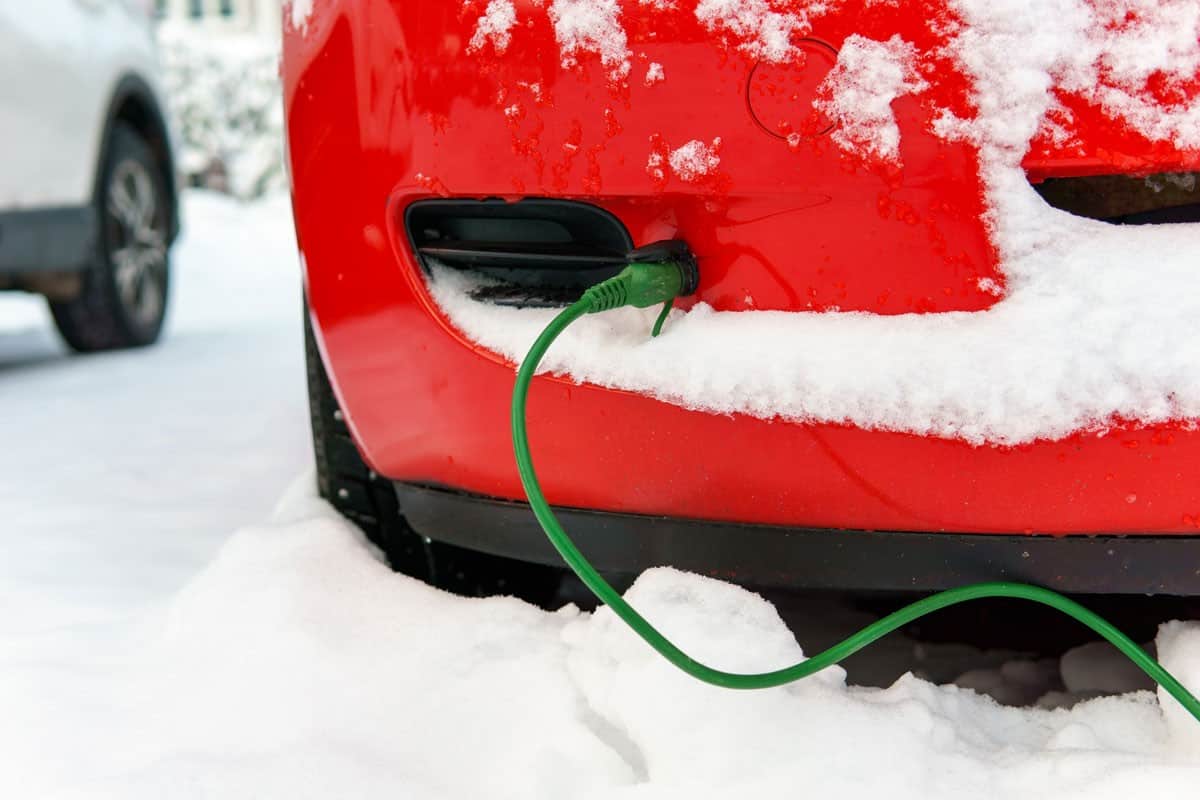Have you had to replace the block heater of your vehicle several times because it keeps burning out, and do you want to know what is causing it? You’ve come to the right place, for we have researched this question, and we have the answer for you.
The common reason why the block heater burns out is mineral deposits. Mineral deposits can cause your heater to burn out in as little as a few days.
Let’s talk more about the reason why your block heater gets lime and calcium deposits and how you can prevent this in the succeeding sections.
Read on!
Why use a block heater?

Two things happen inside your car when the temperature drops.
First, cold weather slows down the chemical reactions inside the car battery. This means that your battery might not be able to produce enough electrical energy for the starter motor during cold months.
Second, the fluids inside the engine will become thicker during cold months.
At room temperature, the molecules of a liquid are bound to each other by intermolecular forces. These forces make it difficult for molecules to move away from the rest of the group, hence giving a liquid its characteristic viscosity. Thermal energy between molecules is what makes them want to break free from other molecules.
A drop in the temperature will also drop the kinetic or thermal energy between molecules, while a temperature rise will do the opposite. Once the kinetic or thermal energy drops, the movement of molecules becomes slower. Thus, cold temperatures naturally increase the viscosity of liquids.
Effect Of Viscosity In Engine Oil
Viscosity is important to motor oils. It is the property of a liquid that causes it to resist flowing. A liquid with high viscosity will not flow well, while a liquid with low viscosity will flow easily.
Motor oils should have the right level of viscosity.
Motor oil with low viscosity will easily flow out. This means that it will not stay long enough between the components of the engine that needs lubrication. Additionally, the oil will not create a lubricating layer thick enough to provide protection.
Thus, low-viscosity oil causes the engine to lose lubrication and generate a lot of friction, leading to premature wear.
On the other hand, viscous motor oil is also not good because the oil pump will have to work hard to make oil flow to the different parts of the engine. Additionally, if the oil is too viscous, it will not flow into the small corners of the engine. This will lead to premature wear of these parts of the engine.
When starting your car during a cold winter morning, viscous oil will cause your engine to become harder to start.
Engine Oil For The Season

If motor oil thickens as the temperature drops, why not switch to low-viscosity engine oil during winter?
This is only possible if the vehicle manufacturer says so in the owner’s manual.
Most domestic vehicles should use only one type of motor oil, whether it’s summer or winter. Domestically made vehicles have engines that operate with the consistent type of engine oil in mind.
The Block Heater

Since most domestic cars cannot use different motor oils that would help them start in winter, the block heater becomes the way to go.
Just as chicken soup warms humans during winter, the block heater warms the engine oil. It is like chicken soup for your engine.
The block heater is an electronic device that warms the engine oil (or a part of the engine) when it is not in use or just before you use your car.
The block heater is not new technology and dates back to 1947, so there are different types of block heaters that you can use.
Freeze Plug Heater
A freeze plug heater, frost plug heater, or Welch plug got its name because it was used to replace the plug at the back of the engine. This block heater is one of the most efficient of all the different types. However, it is also the most difficult to install because you need to locate the freeze plug or the core plug of the engine.
The core hole of the engine is the hole that was used to cast the antifreeze channels of the engine.
The heating element heats the coolant inside the engine while the engine is not running. This prevents the engine from becoming too cold to affect the viscosity of the oil.
This type of block heater will get calcium and lime deposits on its heating element if you do not use distilled water when diluting your antifreeze. Another reason why it will have calcium deposits is when you don’t use the correct ratio of antifreeze and water. Finally, perhaps the biggest contributor to deposits on the heating material is when you use non-distilled water only in the cooling system.
Kat’s 600-Watt Frost Plug Heater is available on Amazon through this link.
Engine-Warming Blanket

An engine warming blanket is an engine heater in the form of a blanket.
It is very easy to install. All you need to do is to open the engine bay and place the blanket over the engine.
The blanket has heating elements distributed throughout its surface area. Heating elements are a kind of resistor that heats up when electrical energy is applied. The heat coming from the blanket keeps the engine warm and prevents the cold from getting into the engine.
This type of block heater does not get deposits because you do not need to expose it to the coolant or the coolant water. The only reason it can burn out is when you use it longer than the manufacturer’s recommendation.
Powerblanket Electric Engine Blanket and Heater is available on Amazon through this link.
Oil Pan Heater
The oil pan heater takes the heating solution straight to where the oil is kept—the oil pan.
It is like a smaller version of the engine-warming blanket that has magnets on its edges. Instead of covering the engine bay with it, you cover the oil pan. This makes it more efficient when heating the engine because it warms up only the most important part—the oil.
Its smaller size allows it to use fewer heating elements. The fewer heating elements mean that it needs less electricity to keep your engine warm.
The downside of this design is that you will need to get it to your oil pan, which is often at the bottom of your vehicle.
ABN Silicone Car Oil Pan Heater Pad is available on Amazon through this link.
Dipstick Heater
A dipstick is a piece of metal that is partially submerged in engine oil. It allows you to check the condition and level of the oil by pulling out the dipstick and checking the oil at its tip.
To use a dipstick heater, you need to remove the regular dipstick and insert the dipstick heater.
Regularly removing the dipstick can result in dirt and particles getting into your engine. This can lead to engine damage.
The advantage of a dipstick heater is that the heater focuses the heat to the oil. This makes it even more efficient than an oil pan heater because an oil pan heater needs to heat the oil pan from the outside before it can heat the oil. The dipstick heat does not need to heat anything before it can heat the engine oil.
A&I’s Dipstick heater is available on Amazon through this link.
Inline Heater
An inline heater is connected to the cooling system of the vehicle through one of the hoses—usually, the hose goes to the bottom of the radiator. There is a heating element in the heater that heats the coolant to warm up the engine. One end of the heater goes to a regular socket that you can plug into an extension that goes to a socket on your wall.
An inline heater’s heating element can suffer the same problems as a freeze plug heater. The same reasons that lead to the problems of a freeze plug heater can lead to problems with an inline heater.
Some inline heaters have their own motor that circulates the coolant in the engine while the engine is off. Some models do not have a separate motor and rely on the natural dispersion of heat inside the engine. You can install both types in the same way.
Installing an inline heater requires a bit of work. Here are the steps to follow.
- Drain the coolant.
- Disconnect the lower radiator hose and connect it to the inline heater.
- Connect another hose between the inline heater and the radiator.
- Mount the heater.
-
- Some inline heaters are designed to be installed close to the heater core of the HVAC system of the vehicle.
Zerostart Series 8000 Light Duty Circulation Heater is available on Amazon through this link.
Bolt-On External Heater
A bolt-on external heater is a modified version of an oil pan heater. Instead of magnetically attaching itself to the oil pan, you bolt it to the side of the engine. Thus, instead of heating the oil inside the oil pan, a bolt-on external heater will heat the engine from the outside.
Conclusion

The right water-antifreeze combination will prevent mineral deposits on the heating elements. Alternatively, you can use other block heater models that can heat the engine oil without exposing it to the water and antifreeze inside the engine.
If you found this article interesting, why not check the two articles below too:





